Koper
Koper (Italian: Capodistria) is Slovenia's only commercial port and one of its oldest towns with a very rich history.
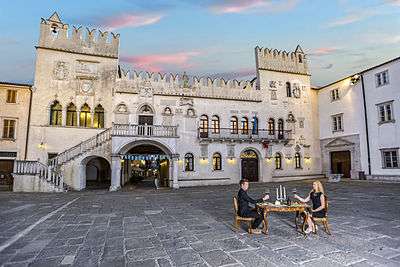
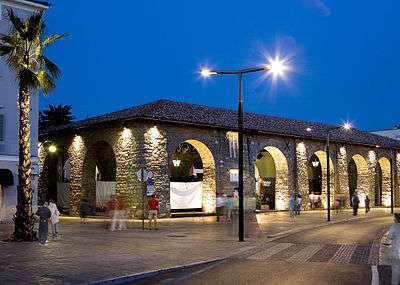
Understand
Koper, the oldest town in Slovenia, developed on a rocky island with the Roman name Capris. Out of the three Slovenian coast cities (Koper, Izola, Piran), Koper has experienced the most numerous layout modifications. The reasons for that also need to be sought in the changes of various reigns and states, all of which marked the city with their specific traits and names. Koper was called Capris in Roman times, in the times of the pope Gregory I (599) Insula Capraria (“goat island”), Iustinopolis under the Byzantine Empire (between mid 6th and 8th centuries) and Caput Histriae (‘head of Istria’) by the Aquileia Patriarchs. The Venetians rendered that name into the Italian form, Capodistria. The Slovenian equivalent of the name is Koper.
The longest reign over the city was that of the Venetian Republic (1279-1797), when Koper experienced economic (trade, salt production) and cultural prosperity (painting, music). The Venetian period is still echoed by the city architecture; despite numerous modern interventions, it has preserved its medieval character, with the city of Koper being a member of the European Association of Medieval Cities. In the Middle Ages, Koper was an island surrounded by walls and connected with the mainland with a wood bridge in the direction of Škocjan. It was protected by a mighty fortress – Lion Castle, and surrounded by vast saltpans. Koper’s importance began to diminish in the 18th century, when Trieste was proclaimed a free port, and ultimately ended with the downfall of the Venetian Republic.
In the period from the 19th century to the First World War (i.e. from the Napoleonic Empire 1806-1813 to the Hapsburg Monarchy 1813-1918), Koper experienced numerous changes in the economic and social development. This period was marked by the reduction of the saltpans, which were entirely abandoned in 1912, and the changing layout of the city, which began to lose its island character. In 1825, a second road connection with the mainland was constructed (Semedela Road) followed by the coastal road in the middle 19th century, a sea connection with Trieste-Poreč and the railway connection Trieste-Poreč in 1902.
Under the Italian Empire, Koper entirely lost its island character by means of the draining of the deserted saltpans.
The time after the Second World War brought further changes. Until the final determination of the border with Italy through the signing of the London Memorandum in 1954, when it officially became part of former Yugoslavia, Koper was part of Zone B administered by the Yugoslav national Army, first belonging to the Julian March and from September 1947 to the neutral state called the Free Trieste Territory (FTT). As part of Yugoslavia, Koper experienced profound changes in its national structure. This also brought about new architectural interventions both in the city centre and its surroundings, especially in terms of huge development with the construction of the port.
Today, Koper is both an commercial and tourist city, continuing to develop its offer in terms of seaside resorts, nautical tourism, sports and shopping. It has also become a University City.
Get in

By plane
The nearest airport is in Trieste (TRS IATA - 64 km), with Pula (PUY IATA - 102 km), Ljubljana (LJU IATA - 124 km), and Venice airports (VCE IATA, TSF IATA - about 174 km) as options. A company named GoOpti provides a shared shuttle transfer from Venice and Ljubljana (and their airports) with dynamic pricing based on time of booking, typically between €25-50. Be aware that the Trieste airport is not close to Trieste, but there are frequent train connections between them. Flixbus also provides scheduled service from Venice airport.
- GoOpti. Shared airport shuttle service to Koper
- FlixBus. Scheduled bus services from some airports to Koper
- 🌍 Trieste Airport (Trieste Friuli Venezia Giulia Airport). TRS - 64km from Koper
- 🌍 Pula Airport, ☎ +385 52 550 926. PUY - 102km from Koper (with border checks)
- 🌍 Ljubljana Airport (Ljubljana Jože Pučnik Airport). LJU - 124km from Koper
- 🌍 Treviso Airport. TSF - 174km from Koper
- 🌍 Venice Airport (Venice Marco Polo Airport). VCE - 176km from Koper
By car
Koper has easy highway connections from Ljubljana and Trieste. As of February 2019, there are currently no regular border checks between Slovenia and Italy, but there are between Slovenia and Croatia.
Beware of the need for a vinjeta (highway toll sticker) before driving on Slovenian highways! There is a fuel station immediately at the border where you can purchase one. Controllers are often stationed exactly after that station to issue heavy fines to violators.
Parking rules are enforced in the city, but some public lots are free on weekends and after-hours.
By rideshare
A locally-created website and app named Prevoz is the most widely used ride sharing site within Slovenia. The typical fare to Ljubljana is €5 from the 🌍 Tržnica / Oly Burger bus stop in the center. This is often the fastest and least expensive way to travel to Koper from other parts of Slovenia.
By bus
Koper has bus connections with Ljubljana, Trieste, other Slovenian seaside towns, and Croatia. There are six scheduled inter-city bus companies: FlixBus and Črnja tours provide frequent international service, and Arriva white/blue buses provide domestic bus service along the Slovene coast with some international routes including Trieste. Nomago and Rižana also provide some regional inter-city services.
The local city administration (in Slovenian) maintains a list of timetables and a map of the suburban bus lines to nearby villages in the Koper district up to the Italian border. These routes should cost €.80 per ride.
There are also hourly buses from Ljubljana listed at the Ljubljana bus station with many stops on the way.
Local city bus services are provided by red Arriva buses and cost €1.50 per ride if paid in cash, or €.80 if paid by bus cards available at the tourist office and a kiosk at the main bus station.
The direct bus services to Trieste operate between 3 and 6 times a day, costing about €3-5. The journey takes between 20 and 40 minutes.
The very cheapest way to get between Koper and Trieste is to take a Rižana/Nomago inter-urban bus to Škofije at the Slovene border (€.80), walk ten minutes on a path under the highway to Bricocenter in Muggia, and take Trieste city bus no. 20 to the center (€1.30). Use of Google Maps is recommended to follow your drive for the first time, and the Slovene buses are infrequent. Trieste city buses do not sell tickets on the bus, but they can be purchased with their "Trieste Transporti" Android or Apple apps, or at locations in Trieste. Make sure your ticket is validated/stamped after boarding.
There is a bus in the direction of Bosnia operated by Salinea.
Besides the main bus station, other major bus stops inside the town are 🌍 Banka Koper and 🌍 Tržnica / Oly Burger. Banka is used for some inter-urban services and GoOpti airport shuttles.
- FlixBus.
- Črnja tours, ☎ +385 52812820, e-mail: info@crnja-tours.hr.
- Arriva (inter-city).
- Arriva (local bus).
- Nomago, ☎ +386 1 431 77 00.
- Rižana (Avtobusni prevozi Rižana), ☎ +386 5 630 44 66.
- Ljubljana Bus Station, e-mail: narocanje@ap-ljubljana.si.
By train
The national railway company Slovenske železnice operates 5-6 daily trains from Ljubljana (2 h) and Maribor (4½ h). 🌍 Koper station (Železniška postaja Koper) serves as both bus and railway station and is located about 1 km south the Muda Gate to the old city. There is no longer any direct train service to Trieste, but trains run a lazy route to Ljubljana a few times per day. See Slovenian Railways. Sometimes, the train station sells discount tickets in person to cities as far away as Vienna and Munich at prices not available online (around €30).
By Taxi
In general, Slovene taxis are less expensive than Italian taxis. They are permitted to pick you up (or drop you off) in Trieste if you order them (about €20-25). Cammeo has a nice English-language app which helps with language barriers. Pick-ups from Trieste might need to be requested over the phone.
- Cammeo, ☎ +386 5 777 1212. Cammeo taxis in Koper, Slovenia. €0.85 per km.
Get around
Koper's Old City can easily be covered on foot. There are also a number local buses that can take you from the main bus station to the old city centre or the newer urban and industrial area.
Local city bus services are provided by red Arriva buses and cost €1.50 per ride if paid in cash, or €.80 if paid by bus cards available at the tourist office and a kiosk at the main bus station. Other buses are available to surrounding areas (see Get In).
Talk
Slovenian and Italian are spoken in the town. English is also a language spoken by the majority of the people.
See
Koper old town
Koper's main sight of interest is the Venetian-era old city, of which the main structures and squares have been fully renovated and restored. The main square (Tito square) is one of the nicest Venetian type squares in the Mediterranean.
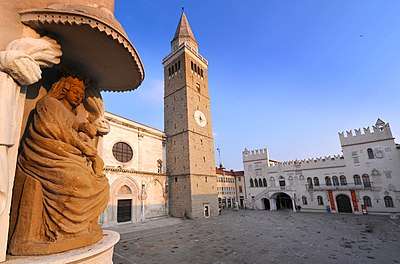
The centre of the old city is Tito Square (Titov trg), an austere piazza surrounded by The Praetorian Palace, Loggia, Cathedral of the Assumption, Campanile, Foresteria and Armeria. From here, the cobbled Čevljarska ulica leads south to the Prešeren square with the De Ponte fountain and the old town entrance Muda gate, Kidričeva ulica leads west to the Marina, the old salt warehouse named Taverna and the Carpaccio square.
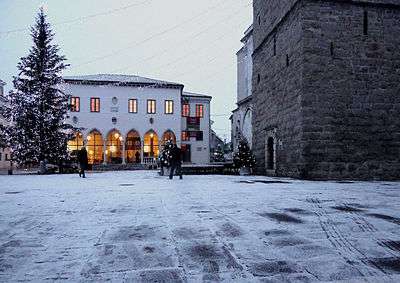
- Praetorian Palace, Titov trg 3. Dating back to the 15th century and the only fully restored building in the plaza, this is Koper's symbol and it now houses the tourist office which offers guided tours of the Palace, including the city council meeting chamber and weddings room for the price of 3€.
- Cathedral of the Assumption, Tito square. The largest Cathedral in Slovenia containing famous paintings from Vittore Carpaccio, a renowed Venetian painter. Fully renovated, with much sacral heritage indoors.
- Campanile, Titov trg. Climb the bell tower for €3 for great views of the city and surroundings.
- Taverna, Ex deposit of salt, nowadays is the location of the most interesting manifestations in Koper.
- Foresteria and Armeria, The Foresteria, formerly known as Albergo nuovo, was used as reception and accommodation facilities for podesta’s guests. Armeria is the former municipal armory.
- Loggia, It was used as a debate club for all the townsmen, with their discussions considered by the city council as well.
- Fountain Da Ponte, The biggest city fountain is a reproduction of the Rialto Bridge in Venice. It was commissioned in 1666 by podesta Lorenzo da Ponte.
- Muda Gate, The Muda Gate remains the only preserved city gate out of the former twelve.
- Fontico, From the very beginning, the building was used as a warehouse for the grain given to the townsmen in times of bad harvest or war.
- Carpaccio house, The house was the home of the eminent Venetian painter Vittore Carpaccio.
Koper Hinterland
- Church of the Holy Trinity, Hrastovlje The church boasts beautiful frescoes, an extraordinary achievement of Medieval iconography. The most famous is the depiction of the Dance of Death.
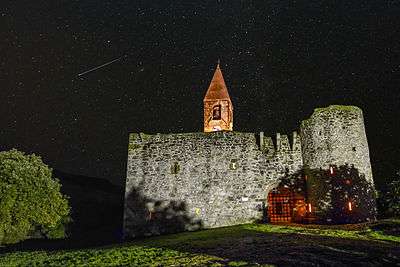
- Defence tower, Podpeč This 11th century, 17 m defence tower is a popular tourist sight and one of the most enchanting beauty spots in Slovenian Istria.
- Škocjanski zatok Nature Reserve Stretching out over 122 ha, this is the largest brackish wetland in Slovenia. The area is home to countless birds and other animal species, such as Istrian cattle (boškarin) and Camargue horses.
- Church of St. Roch and St. Sebastian, Boršt According to some sources, the church dates back to the 13th century. It is decorated with fragments of Medieval frescoes and inscriptions in the Glagolitic alphabet.
- The Benko house, Črni Kal The Benko house is believed to be the oldest farmer’s house in Slovenia. It was built in 1489 by the masters Andrej and Benko of Sočerga.
- Coat-of-arms of the De’Cani family, Dekani The name Dekani is linked to the noble Cani family, also known as De’Cani, which originates from the town of Sulmone in Abruzzi, Italy. According to some sources, the De’Cani family owned the village as long ago as the 15th century, as there is a coat-of-arms of the Cani family with the date 1479 on the building at no. 185.
- Church of St. Nicholas, Gračišče Next to this late 18th century church, there is a 26 m white stone bell tower with a built-in stone plaque bearing an inscription in the Cyrillic and Glagolitic alphabet that reads: “I call the living, I mourn the dead.”
- Village architecture, Abitanti The fascinating architectural features of the protected buildings in Abitanti testify to the fact that this was once a very rich village.
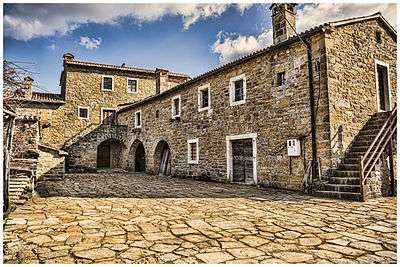
- Church of St. Michael, Tinjan Positioned on the edge of the village, the church building has a Baroque front; the entrance is through the large bell tower. The stone plaque built into the portal shows Christ on the Cross and the date 1704.
- The Krkavče Stone, Krkavče Believed by some to be 3000 years old, the stone is the oldest sight in the village. It is 1.5 m tall; on two sides, it features a carved image of what is probably a pagan deity.
- The Dragonja valley At 29 km long, the Dragonja is the longest river in Slovenian Istria. The river valley is well known for its diversity of plant and animal life. Today, it is a nature park popular with hikers, cyclists and nature enthusiasts.
- Marežganska Kanava, Marezige A beautifully preserved stone farmer's house and the main venue of the Refosco Festival and St. Martin's Day celebrations. There are three vines growing outside Kanava: Refosco, Malvasia and Žametovka, a descendant of the world’s oldest vine in Lent, Maribor.
- The Bardinc House, Lopar The building houses a local ethnology and history exhibition with a preserved farmer’s kitchen, fireplace and wine cellar.
- Rock shelters (“The Ears of Istria”) and natural bridge, Sočerga Above Sočerga, nature has carved out some beautiful rock shelters, also known as “The Ears of Istria”. The panoramic trail leads past three 17 m rock shelters to a natural bridge with a 6 m stone arch.
- Slavnik, Podgorje 1028 m high, the hill of Slavnik is situated near the village of Podgorje. The summit of Slavnik offers beautiful views, with the Adriatic Sea, Italian Dolomites, Carnic and Julian Alps, Karavanks and even the Kamnik–Savinja Alps visible in clear weather.
- Strmec Castle, Socerb The Strmec Castle is situated on top of a 440 m Karst cliff above the village. It was built in the 13th century on the foundations of an Illyrian settlement. Today, the castle is one of the most magnificent beauty spots in Slovenian Istria.
- Sacred Cave, Socerb According to a legend, the Sveta jama or Sacred Cave was the dwelling of St. Servulus, a Trieste martyr and saint who lived in the 3rd century. The front part of the cave with a natural stone altar still houses a church today – the only underground church in Slovenia.
- Church of the Immaculate Mother of God, village square and stone window, Šmarje The church was built in the village square in the 11th century. It was expanded and renovated in the 13th century. There is a bell tower next to the church with a built-in 9th century stone window, the remnant of an older church that once stood in the same spot.
- The Supot waterfall and views The 10 m waterfall is at its fullest in the rainy season. The macadam road towards the Dragonja also leads past a smaller waterfall with a beautiful pool.
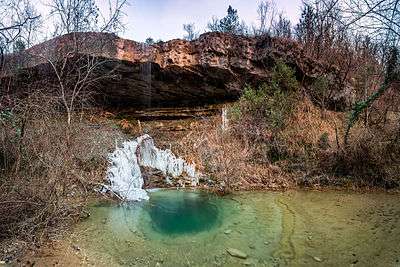 Waterfall Supot, Pomjan
Waterfall Supot, Pomjan - Mediterranean herb garden, Manžan The Mediterranean herb garden at the Butul farm in Manžan is a unique experience. Walking through the garden is educational and relaxing at the same time. Cooking and herbal workshops can be organised by agreement.
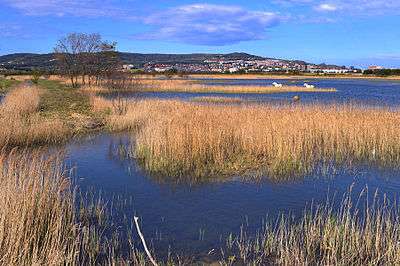
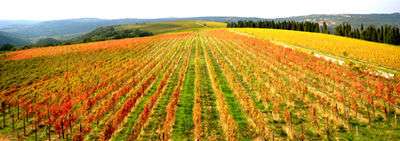
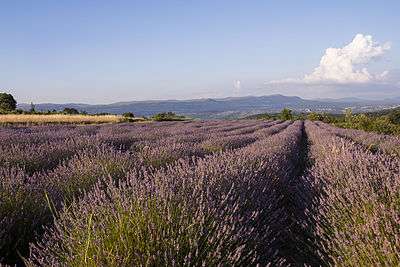
Do
There are is a public beach in the sea just west of the marina. A large sports area called Bonifika (basketball, football, running track, tennis courts, etc.) is located near the old city centre. Near the industrial area of the Port of Koper (very close to the city centre), there is a natural park called Škocjanki zatok, which is a perfect place for enjoying the flora and fauna of this natural resort.
The path along the shore to Izola and Piran lends itself very well to skating, cycling or just going for a walk and enjoying the view over the water.
Buy
There are several shopping centres, for example: Planet Tuš Shopping Centre , Mercator, Supernova and SPAR. There is also a big department store called Zeleni park where you will also find OVS store. In the city centre there are numerous offers offered by the Koper Card; discounts and presents at the city providers identified by the Koper Card label. The discounts may be used many times during the validity period of the card, at every purchase or service order at the providers. Koper Card is also used together with its cupons, which are used for getting free entrances into Koper`s main monuments (the Bell tower, Praetorian Palace, Regional museum and the Ethnological collection).
Eat
In Koper you will find many taverns and restaurants, offering plenty of choice for food. You should try one or more of the many taverns and restaurants, snack bars and local smaller taverns offering local food and wine, Pizzerias, traditional Osmicas (farmers offering home made food and wine), sweetshops and tourist farms with traditional home made Istrian food.
When in Koper, do not leave without trying some typical Istrian goodies and other typical Istrian products. Also, you should definitely try some local olive oil from local oil providers. Istrian olive oil is reputed to have many positive effects on the body.
Taverns and restaurants in Koper
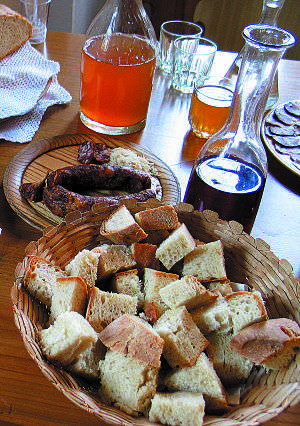
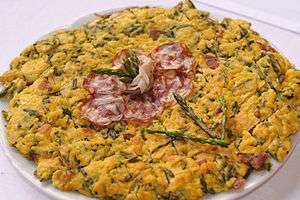
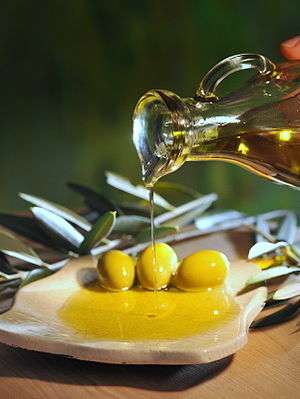
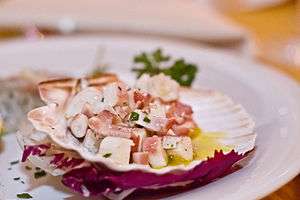
- Miranda Tavern, Vanganelska cesta 7A.
- Mediterranean restaurant and pizzeria Capris, Dolinska cesta 1B.
- Turk Inn, Cesta med vinogradi 34.
- Za Gradom Tavern, Kraljeva ulica 10.
- Restaurant Pristan, Ferrarska 30.
- Skipper Restaurant, Kopališko nabrežje 3.
- The Emonec brewery and restaurant, Vanganelska cesta 20.
- Chinese restaurant Chang, Cesta Marežganskega upora 13.
- Pizza 33, Istrska cesta 67.
- Hotel Bio Restaurant Vodišek, Vanganelska cesta 2.
- Self service Tavola Amica, Vojkovo nabrežje 38.
- Restaurant Capra, Pristaniška ulica 3.
- Pri Tinetu Inn, Gortanov trg 14.
- House De Rin, Cankarjeva ulica 3.
- Istrska klet Slavček, Župančičeva ulica 39, 6000 Koper.
- Urban Piqniq, Cesta Zore Perello - Godina 3.
- Chada Thai cuisine, Pristaniška ulica 35.
- Chinese restaurant Cesarska hiša, Ankaranska cesta 5b, 6000 Koper.
- Na stopničah, Gortanov trg 12, 6000 Koper.
Taverns and restaurants in the hinterland
- Švab Tavern, Hrastovlje 53, 6275 Črni Kal.
- Majda Tavern, Osp 88, 6275 Črni Kal.
- Norma Tavern, Dekani 34A, 6271 Dekani.
- Cah Tavern, Rižana 22, 6271 Dekani.
- Brič restaurant and enotheque, Dekani 3B, 6271 Dekani.
- Na Brdi Tavern, Dekani 53, 6271 Dekani.
- Mohoreč Tavern, Kubed 66A, 6272 Gračišče, Kubed 66A.
- Jakomin Tavern, Kubed 3, 6272 Gračišče.
- Sočerga Tavern, Sočerga 1, 6272 Gračišče.
- Domačija Ražman, Gračišče 1, 6272 Gračišče.
- Tavern Oljka, Vanganel 40.
- Konoba Moja, Loka 54, 6275 Črni Kal.
- Socerb castle Restaurant, Socerb 7, 6275 Črni Kal.
- Restaurant Tenja, Predloka 5, 6275 Črni Kal.
- Restaurant and pizzeria na Škofijah, Spodnje Škofije 256, 6281 Škofije.
- Baladur tavern, Grintovec 39, 6274 Šmarje.
- Trije Lovci Tavern, Srgaši 38, 6274 Šmarje.
- Pod Slavnikom Tavern, Podgorje 1, 6216 Podgorje.
- Pri Dorici Tavern, Sv. Anton 1, 6276 Pobegi.
- Karjola Tavern Marezige, Marezige 24, 6273 Marezige.
- 🌍 Gostilna Belvedur, Belvedur 1, 6272 Gračišče, ☎ +386 51 385 607, +386 5 657 40 22. regional, often homemade food
- Al mulin, Sermin 19, 6000 Koper.
Drink
In Koper you will find a variety of bars and pubs with a various offer of styles and drinks, bigger and smaller wine cellars with rich local wine offerings.
Bars, pubs and caffes
- Calypso caffe, Pristaniška ulica.
- Casa Veneziana, Ribiški trg 9.
- Snack Bar, Istrska cesta 67.
- Triglav Caffe, Pristaniška ulica 5.
- Pastry Kroštola, Kopališko nabrežje 1.
- Kapitanija Caffe, Ukmarjev trg 8.
- Bowling (Disco Planet Tuš), Ljubljanska cesta.
- Loggia Caffe, Titov trg.
- Ziraldo Caffe, Bazoviška ulica 21.
- Port Bar, Istrska cesta 67.
- Tea House Vanilla, Pristaniška ulica 3.
- Pub 33, Ljubljanska cesta 2a.
- Pastry Klasika, Obrtniška ulica.
- Lord Byron Pub, Repičeva 2, 6000 Koper.
- Bar Cameral, Čevljarska ulica 14.
- Okusi Istre, Kidričeva ulica 37.
- Super sok, Pristaniška ulica 2.
Wine cellars
- Wine cellar Brič, Novi Brič 1, 6274 Šmarje.
- Osmica and tourist farm Jakomin, Kubed 3, 6272 Gračišče.
- Wine cellar Vinakoper, Šmarska cesta 1.
- Babič Wine cellar, Šalara 59.
- Organic Viticulture Rodica, Truške 1/c, 6273 Marezige.
- Wine cellar Oras Jerman, Glem 32, 6273 Marezige.
- Wine cellar Krmac and Grbac, Marezige 1/6, 6273 Marezige.
- Wine cellar Santomas, Šmarje 10, 6274 Šmarje.
- Wine cellar Škrgat, Hrastovlje 49, 6275 Črni Kal.
Sleep
Budget
- Dijaški dom Koper, Cankarjeva ulica.
- Hostel Museum, Muzejski trg.
- Motel Port, Ankaranska cesta 7.
- Hostel Histria, Ulica pri Velikih vratih 17.
- Prenočišča Prisoje, Prisoje 9.
- Hostel Secret garden, Dimnikarska ulica 6. Check-out: Before 11:00. Lovely little hostel of 20 beds spread over four rooms. Well air-conditioned and very clean, but the two bathrooms containing both showers and toilets can cause some queueing in the morning. During high season (1 July - 30 September): €18.73 for a bed in a 4-bed dorm, €16.73 in a 6-bed dorm. During low season (1 October - 30 May): €16.73 and €14.73, respectively.
Mid-range
- 🌍 Koper Hotel, Pristaniška ulica 3, ☎ +386 5 610 03 00. The only hotel in the old city.
- 🌍 Garni hotel Pristan, Ferrarska ulica 30, ☎ +386 5 614 40 00.
- 🌍 Hotel Žusterna, Istrska cesta 76, ☎ +386 5 610 03 00.
- 🌍 Hotel Vodišek, Kolodvorska cesta 2, ☎ +386 5 639 24 68.
- 🌍 Hotel Bio, Vanganelska cesta 2, ☎ +386 5 625 88 84.
- 🌍 Apartment & Suites Veneziana, Ribiški trg 9, ☎ +386 5 626 12 40.
Go next
The rest of Slovenia's short coastline is easily accessible from Koper. Public bus service is available every 20-30 minutes to: